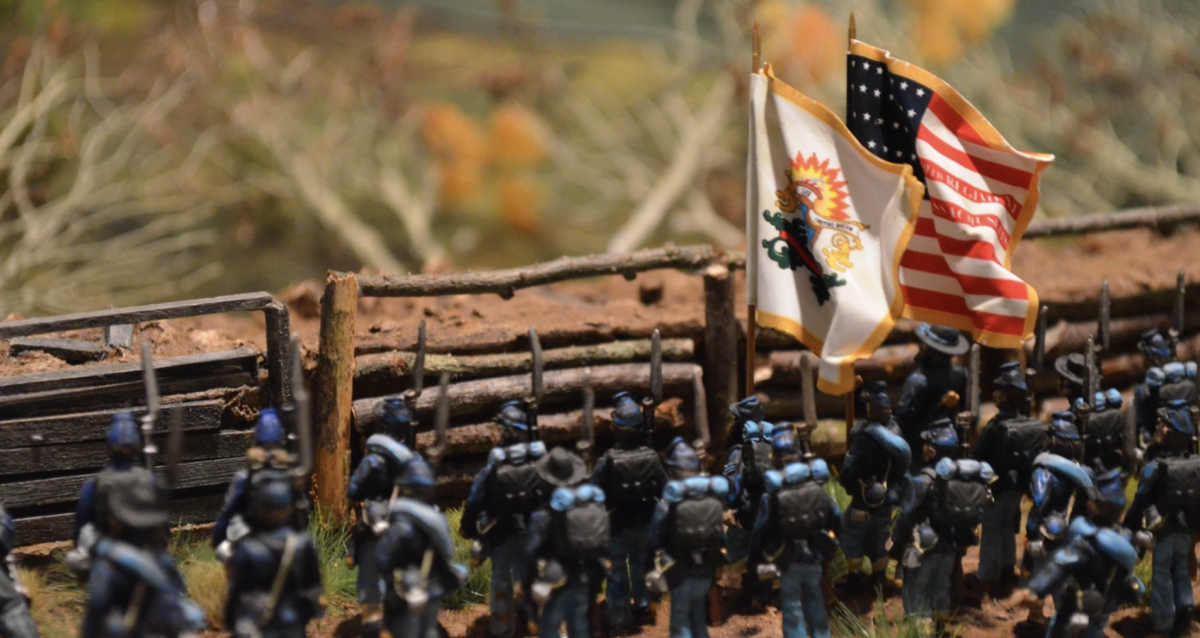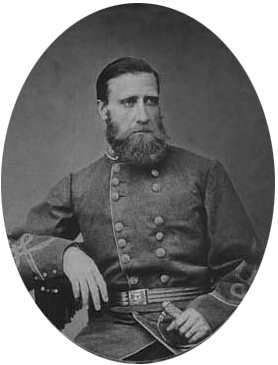[Contemporary summary of Hood’s Retreat]
Retreating from the decisive Battle of Nashville, Confederate General John Bell Hood’s army faced a treacherous journey back to Alabama. The events that unfolded during Hood’s retreat shed light on the challenges and hardships endured by the Confederate forces. On the night of December 16, 1864, Lieutenant General Stephen D. Lee’s Confederate rear guard established their camp about seven miles north of Franklin, Tennessee. Exhausted and lacking supplies, the Confederate soldiers had hastily abandoned much of their equipment and muskets in their desperate rush to retreat from Nashville.
As dawn broke on the rainy morning of December 17, the Confederates resumed their march towards Franklin. Along the way, they encountered Union troops on two occasions. The first engagement occurred at Hollow Tree Gap, approximately five miles north of Franklin, resulting in a brief exchange of gunfire with Union Major General James Wilson’s advanced cavalry. A more significant skirmish took place around 9:00 a.m. when two mounted Union regiments launched a frontal charge against the Confederate line. Although the Confederates successfully repelled the attack, inflicting twenty-two Federal casualties and capturing an additional sixty-three soldiers, they realized the growing threat posed by the advancing Union forces.
Around 10:00 a.m., Lee’s rear guard made the decision to withdraw, aiming to cross the Harpeth River and reach Franklin. The Confederate soldiers encountered two bridges spanning the river—a temporary pontoon bridge and a railroad trestle bridge near Fort Granger. By 10:30 a.m., the last of the Confederate wagons had safely crossed the bridges, and the troops began disassembling the pontoon bridge. However, their progress was abruptly halted when Wilson’s cavalry launched an attack.
Brigadier General Randall Gibson’s Brigade, consisting of 500 Louisiana infantrymen, held their position near the river and the railroad overpass at Liberty Pike. Assisted by a portion of Brigadier General Abraham Buford’s cavalry and two field guns, they faced a formidable challenge. Despite their valiant efforts, the outnumbered Confederate soldiers were overwhelmed by the nearly 3,000 Federal cavalrymen. Buford’s cavalry was driven into disarray and forced into the rising waters of the Harpeth River, resulting in chaotic scenes of panic and confusion as the soldiers fled across the pontoon bridge.
During this tumultuous retreat, a Confederate battery positioned along Front Street in Franklin unleashed cannon fire upon Wilson’s cavalry, momentarily forcing them to retreat. Nonetheless, the respite was short-lived, as the Confederate soldiers faced the daunting task of dismantling the pontoon bridge while under enemy fire. Determined to prevent the Union troops from crossing, Hood’s army continued its withdrawal, eventually reaching safety in the town of Thompson’s Station.
Hood’s retreat from Nashville was marked by exhaustion, perilous river crossings, and fierce skirmishes with pursuing Union forces. The Confederate soldiers, already demoralized by their defeat at Nashville, now found themselves battling fatigue, adverse weather conditions, and overwhelming enemy numbers. Despite their resilience, the retreat marked a turning point in the Civil War, as the Union forces closed in on Hood’s army, bringing the Confederacy one step closer to its ultimate defeat.

Headline:
Confederate General Hood’s Retreat: Eyewitness Accounts Illuminate Harrowing Journey Following Battles of Franklin and Nashville
Subtitle: Union Soldiers Provide Firsthand Insights into the Trials and Tribulations of the Confederate Army’s Retreat
Nashville, December 28, 1864 – In the wake of the Battle of Nashville and the preceding Battle of Franklin, the Confederate army, led by General John Bell Hood, embarked on a grueling retreat back to Alabama. Eye-witness accounts from Union soldiers shed light on the intense battles and the hardships endured by the retreating Confederate forces, providing a firsthand perspective on this crucial phase of the Civil War.
Chaplain William C. Holliday of the 90th Ohio Infantry, Company S, documented the events unfolding on the battlefield through a series of letters and diary entries. Writing to his mother on December 18, 1864, Chaplain Holliday shared his observations: “Our troops had moved rapidly after the panic-stricken and fleeing rebels… They slept on the mud and under the rain… Rebels are still going. It is the greatest victory of the war.” Holliday’s account paints a vivid picture of the exhaustion and challenging conditions faced by both Union and Confederate soldiers during the retreat.
In another letter to his wife, written on the same day, Chaplain Holliday describes the aftermath of the Battle of Franklin: “The rebels suffered terribly. They assaulted our works and were killed by the hundred… I counted over three hundred and fifty graves. There were as many on the other side.” These harrowing details offer a glimpse into the ferocity of the fighting and the heavy losses suffered by the Confederate forces.
Moving forward to December 19, Chaplain Holliday’s letter from Spring Hill captures the ongoing pursuit of the retreating Confederates: “All day we have passed the wrecks of Hood’s fleeing army, signs of hot pursuit… Rain increases and our bed is wet as has been for some time.” The relentless pursuit by the Union soldiers and the challenging weather conditions paint a vivid picture of the difficult circumstances faced by the retreating Confederate army.

In addition to Chaplain Holliday’s accounts, the diary of Addison Lee Ewing, a soldier from the 63rd Indiana Infantry, provides further insights into the challenges encountered during the retreat. On December 20, Ewing notes the presence of wrecked Confederate equipment along the route of their march: “All day we have passed the wrecks of Hood’s fleeing army, signs of hot pursuit.” Ewing’s observation underscores the relentless pursuit of the retreating Confederates by the Union forces.
The retreat of the Confederate army was marked by hardship, exhaustion, and skirmishes with pursuing Union troops. Stripped of supplies and equipment, the Confederate soldiers faced increasingly difficult conditions as they made their way south. However, the Union forces, driven by their recent victories, pursued the retreating enemy with determination and resolve.
The Confederate soldiers’ retreat was a test of their endurance and resilience. With each passing day, the Union soldiers closed in on their retreating foes, pressing them relentlessly. The Confederate soldiers, once filled with hope and determination, now found themselves on the defensive, battling fatigue and the elements.
As the war continued to unfold, the Union forces remained steadfast in their commitment to restoring peace and unity to the nation. The Battle of Franklin and the Battle of Nashville had dealt significant blows to the Confederate cause, and the pursuit of General Hood’s army marked a critical phase in the Union’s efforts to bring an end to the rebellion.
The sacrifices and struggles endured by both sides in these battles served as a testament to the courage and resilience of the soldiers on the front lines. As we reflect on the events that have transpired, we honor the bravery and sacrifice of all those who have fought to preserve the Union and ensure a better future for generations to come. The retreat of General Hood’s army is a poignant reminder of the realities of war and the resilience of the human spirit in the face of adversity.
As the Civil War rages on, the nation eagerly awaits further developments, hoping for an end to the bloodshed and a return to peace. The battles of Franklin and Nashville have shifted the tide in favor of the Union, but the ultimate outcome of the war still hangs in the balance. The Union soldiers’ unwavering resolve and the Confederate soldiers’ dogged determination ensure that the path to victory will be arduous, but the dream of a reunited and stronger nation remains within reach.






 Gen. John Bell Hood’s Confederate division, made up mostly of Texans, Arkansans, and Alabamians, made their assault upon the far left Federal flank at Gettysburg on July 2nd, 1863. Gen. Sickles’ men
Gen. John Bell Hood’s Confederate division, made up mostly of Texans, Arkansans, and Alabamians, made their assault upon the far left Federal flank at Gettysburg on July 2nd, 1863. Gen. Sickles’ men